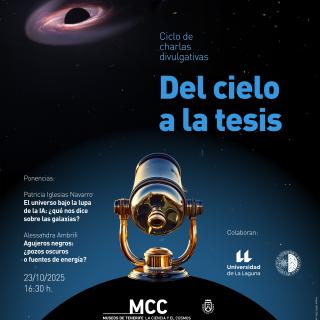Between 3rd and 5th June 2015 Puerto de la Cruz, Tenerife, will be the venue of the Thermal Models in Planetary Science II (TherMoPS II) conference, organized by the Institute of Astrophysics of the Canaries (IAC) with the financial support of NASA’s Center for Lunar and Asteroid Surface Science.
The study of the minor bodies in the Solar System (all the bodies which form it except for the Sun and the planets), is crucial for our understanding of the origin and evolution of our planetary system. The thermal infrared range, between 3 and 50 microns, allows us to determine physical properties of the surface of these objects, such as their temperatures, the composition of their rocks, and others, which cannot be measured in other ranges. In the past 10 years the space telescopes WISE, Herschel, and Spitzer have obtained data in the thermal infrared for hundreds of thousands of asteroids, comets, natural satellites, and transneptunian objects and the dust in our Solar System. These data have allowed thermal modelling in planetary sciences -fitting models to the infrared data- to experience an extraordinary growth during this period.
It is six years now since the first TherMoPS conference, which took place in Beaulieu-sur-Mer (France), where experts from all over the world pooled their updated visions of all the relevant aspects of thermal modelling of Solar System objects. The new data, and the perspectives opened up by the telescopes ALMA and JWST, as well as the thermal instruments for planetary research in space probes such as BepiColombo or OSIRIS-REx have made a new conference essential.
TherMoPS II will be an opportunity for the scientific community to discuss the applications and perspectives of thermal models in planetary science, from observations to theory, and laboratory experiment. New lines of research will also be proposed, and new questions posed, in the context of the new frontiers in the modelling of the data in the thermal infrared, which have been taken, or will be taken in the near future, by e.g. Herschel, Planck, JWST, ALMA, TPF, GTC, etc., and by the thermal instruments in the space missions within the Solar System (for example MIRO and VIRTIS, Rosetta, Mertis in BepiColombo, OTAS in OSIRIS-REx, Hayabusa II, and Spica). Attention will be centred on the smaller bodies in the Solar System, such as the Trojands of Jupiter, main belt asteroids, the nuclei of comets, and transneptunian objects.
Contact:
Javier Licandro (IAC): jemeuso [at] iac.es (jlicandr[at]iac[dot]es), 676286824
Further information: conference website



